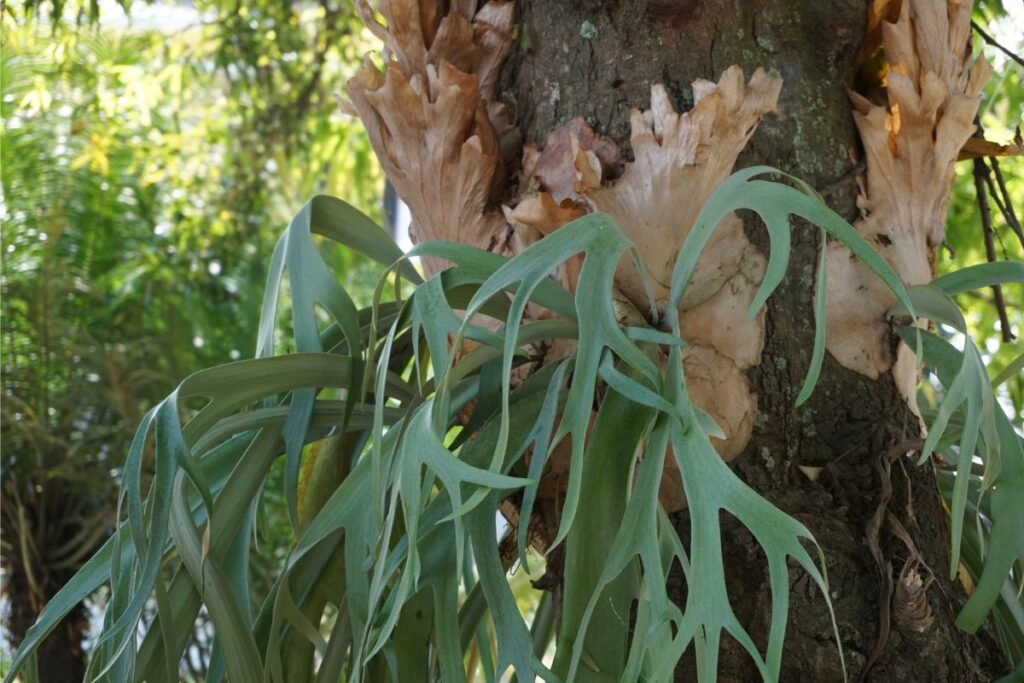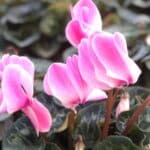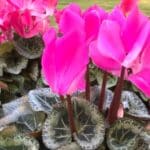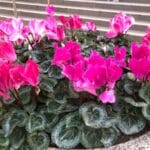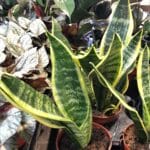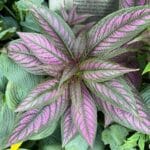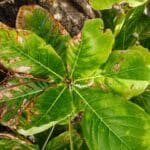Spreading nearly three feet wide with delicate, lace-like branches, the elkhorn is a captivating sight.
Growing and caring for this ornamental plant isn’t difficult, but there are a few things to keep in mind to ensure its health and beauty.
Elkhorn ferns are a type of epiphytic fern that get their name from their fronds, which resemble the antlers of an elk. These beautiful plants are native to tropical regions and can be found growing on trees, rocks, and other surfaces.
This guide will teach you everything you need to know about growing and taking care of elkhorns. With these tips, you’ll be able to create a stunning display in your yard or garden that will last for years.
So, let’s get started!
Plant Facts
| Scientific name | Platycerium bifurcatum |
| Common names | Elkhorn ferns, staghorn ferns |
| Family | Polypodiaceae |
| Plant Type | Houseplant (Fern) |
| Height and Width | 3 feet tall and wide |
| Origin | Australia, New guinea, Southeast Asia, Africa, South America |
| Flower colors | N/A |
| Foliage color | Dark green |
| Sun Exposure | Indirect sunlight |
| Soil Type & pH | Well-drained soil or sphagnum moss |
| Special features | Rare epiphytic plant |
How to Grow Staghorn Ferns
Elkhorn ferns are a type of epiphytic fern, meaning that they grow in trees or on other plants instead of in soil. These unusual plants are native to tropical regions and thrive in humid environments. If you live in an area with hot summers and mild winters, you can grow elkhorn ferns outdoors.
However, if you live in a colder climate, you’ll need to grow your staghorn plant indoors.
When growing elkhorn ferns, it’s important to provide them with bright indirect light and high moisture levels. If the air in your home is too dry, you can raise the humidity level by placing your ferns on a pebble tray or using a humidifier.
Elkhorn ferns prefer to be slightly potbound, so be sure to choose a pot that is only slightly larger than the root ball. These ferns are relatively low-maintenance plants, but they will benefit from regular feeding during the growing season. With proper care, elkhorn ferns can make a striking addition to any indoor or outdoor space.
Propagation
While they are generally easy to care for, one of the most common questions about elkhorn ferns is how to propagate them. The good news is that propagation is relatively simple and only requires a few steps.
To start, find a healthy staghorn fern plant that you would like to use as your parent plant. Cut a 6-8 inch piece off of one of the foliar fronds, making sure that there are at least 2-3 leaves on the piece.
Next, remove the bottom leaves from the cutting and dip the end in rooting hormone. Once the hormone has been applied, pot the cutting in a well-draining potting mix and water it thoroughly.
Make sure to keep the potting mix moist but not soggy, as too much water can cause root rot. Place the pot in a location with bright indirect light and wait for new growth to appear. With a little patience and care, your elkhorn fern will soon be ready to go!
Soil
While this plant adaptable to a variety of growing conditions, staghorn fern grows moist, well-drained soil with a pH level between 5.5 and 6.5. A light growing medium like bark or peat moss will work for your host plant – you can even grow them in wire baskets (like a hanging basket).
Elkhorn ferns should be watered regularly, as they will quickly suffer from dehydration if the air around them is too dry. After all, they are native to tropical rainforests, like those in Madagascar.
Pruning
While elkhorn ferns are relatively low-maintenance plants, they will benefit from periodic pruning to remove any dead or damaged leaves. Pruning also encourages new growth, resulting in a fuller plant.
To prune an elkhorn fern, simply cut away any dead or damaged leaves with a sharp pair of scissors or pruning shears. Avoid cutting into the crown of the plant, as this can damage new growth.
Once you have removed all of the dead leaves, shape the plant by trimming any long or straggly fronds. Elkhorn ferns can be pruned anytime during the growing season. However, if you plan on doing extensive pruning, it is best to do so in early spring before new growth begins.
Repotting and Transplanting
These tough plants can tolerate a wide range of conditions, but they do need to be repotted or transplanted every few years to prevent them from becoming rootbound. When repotting an elkhorn fern, be sure to use a well-draining potting mix and a pot that is only slightly larger than the current one.
Transplanting is a bit more tricky, as elkhorn ferns have delicate roots that can easily be damaged. The best time to transplant an elkhorn fern is early spring, before new growth begins. Be sure to water the plant well and keep it out of direct sunlight until it has adjusted to its new location.
Staghorn Fern Care
Elkhorn ferns are popular houseplants that are known for their large, frilly leaves. These tropical plants are native to Central and South America, and they thrive in warm, humid environments.
If you live in a dry climate, you may need to take some extra steps to care for your elkhorn fern. Here are some elkhorn fern care tips.
Water
These epiphytes are native to tropical regions and prefer warm, humid conditions. However, they can also thrive indoors if they are given the proper care. One of the most important aspects of elkhorn fern care is watering.
These plants should be watered regularly, but allowed to dry out somewhat between waterings. Over-watering can lead to root rot, so it is important to allow the soil to partially dry out before watering again. Use room temperature water to irrigate your plants.
Elkhorn ferns also benefit from high humidity levels, so placing the plant near a humidifier or misting it regularly can help to keep it healthy and thriving.
Sunlight
When growing elkhorn ferns indoors, it is important to provide adequate humidity and bright, indirect light. Elkhorn ferns will do best in an east- or north-facing window.
The staghorn ferns grow best in an area where they will receive morning sunlight and dappled sunlight or shade during the afternoon. If the fronds begin to yellow or brown, this is a sign that the plant is not getting enough light.
Humidity and Temperature Staghorn Ferns
When growing elkhorn ferns indoors, it is important to maintain high humidity levels. Growing staghorn fern at humidity levels of at least 60% is perfect. The ideal temperature range for elkhorn ferns is between 65-80 degrees Fahrenheit.
If the air in your home is too dry, you can increase the humidity around your plant by setting it on a pebble tray or grouping it with other plants.
Fertilizer
Elkhorn ferns are relatively easy to care for and make an attractive addition to any home. However, like all plants, they need to be fertilized on a regular basis in order to stay healthy. The best time to fertilize elkhorn ferns is in the spring, before new growth begins.
Use a balanced fertilizer that is specifically designed for use on staghorn fern species. Apply the fertilizer according to the manufacturer’s instructions, being careful not to over fertilize, as this can damage the plant.
Pest and diseases
These beautiful epiphytic plants are popular houseplants and are relatively easy to care for. However, they can sometimes be affected by pests or diseases. Some of the most common problems include mealybugs, aphids, spider mites, and thrips. If your elkhorn fern is infested with any of these pests, you should consult a professional for treatment options.
Mealybugs
Mealybugs are small, wingless insects that are covered in a white, mealy wax. They feed on plant sap, which can cause leaves to yellow and wilt. If you see any mealybugs, you can remove them by squishing them with your fingers or using a strong stream of water from a hose to blast them off the plant.
Aphids
Aphids are small, soft-bodied insects that can be a variety of colors, including green, black, and brown. Like mealybugs, they feed on plant sap and can cause damage to leaves and stems. One way to prevent these pests from infesting your ferns is to keep the potting area clean and free of debris. This will remove potential hiding places for them.
Spider Mites
Spider mites are tiny spiders that live on the undersides of leaves and spin webbing. They Are extremely small, making them difficult to spot with the naked eye. However, they can cause a great deal of damage to your plants and furniture.
Spider mites are usually found in hot, dry conditions and thrive in dusty environments. They feed on the sap of plants, which can cause the leaves to turn yellow and eventually drop off.
Thrips
Thrips are small, dark-colored insects that feed on plant tissue. Thrips are often found in humid conditions and feed on the flowers and leaves of plants. This feeding can cause the plant to wilt and the flowers to fall off. In order to prevent these pests from infesting your home, it is important to keep your house clean and free of dust.
Additionally, you should regularly inspect your plants for signs of damage and treat them promptly if you notice anything suspicious.
Low Humidity
One of the most common is browning or discoloration of the leaves, which can be caused by low humidity, excessive sunlight, or lack of water. If the leaves turn brown around the edges, it is usually a sign of too much water, while overall browning can indicate a lack of moisture.
Root Rot
Lastly, elkhorn ferns can sometimes be affected by a bacterial disease known as root rot. This happens when the roots are exposed to too much moisture and start to decompose. Root rot can kill the plant, so it is important to take steps to prevent it.
Common Varieties and Cultivars
Elkhorn ferns (Platycerium spp.) are a type of epiphytic fern that gets its name from its large, antler fronds. There are many different species of elkhorn fern, and they can be found in tropical regions all over the world.
While they all share a similar appearance, there is a wide range of variation in size, shape, and color among the different cultivars.
Some common varieties of elkhorn fern include the Platycerium bifurcatum, Platycerium veitchii, and Platycerium superbum. These plants make great additions to any indoor or outdoor space, and they are relatively easy to care for.
Platycerium bifurcatum
This fern is native to tropical Africa, Australasia, and Polynesia. The plant grows in humid forest habitats, often on trees or rocks. The staghorn fern gets its name from its distinctive antler-like fronds.
The plant has a leathery texture. The shield fronds are bi-lobed and can be either green or red in color. Platycerium bifurcatum is commonly used as a houseplant or ornamental plant. It is also used in traditional medicine for the treatment of wounds and skin infections.
Platycerium veitchii
Platycerium veitchii, commonly known as Veitch’s staghorn fern, is a species of fern in the genus Platycerium. It is native to New Zealand and southeastern Australia. The plant has large, dark green leaves that are covered in brown scales.
The leaves are trapezoidal in shape and can grow up to three feet in width. The plant produces large, black spore clusters that are borne on the underside of the leaves. P. veitchii is a popular ornamental plant and is widely cultivated in gardens and parks. It is also used as a houseplant in many parts of the world.
Platycerium superbum
Native to tropical regions of Australia, this staghorn fern gets its name from its distinctive shape. The plant’s fronds resemble the horns of a stag, and they are covered in a velvety coating that helps to protect the plant from the drying effects of the sun.
The plant is commonly found growing on tree trunks or branches, and it gets the majority of its nutrients from rainwater and decaying organic matter. The staghorn fern is an important part of the rainforest ecosystem, and it plays a role in preventing soil erosion and providing habitat for other animals.
Platycerium elephantotis
P. elephantosis, also known as the elephant ear staghorn fern, is a type of staghorn fern (Platycerium) prized for its large, rounded fronds. Unlike some staghorns with forked “antler” fronds, P. elephantosis boasts impressive, shield-shaped fronds that resemble elephant ears, hence the nickname.
Just like other staghorns, it thrives mounted on surfaces and enjoys bright, indirect light.
FAQs
Can staghorn ferns stay in pots?
Staghorn ferns can stay in pots, although they are often mounted on boards or other surfaces instead. When grown in pots, ensure they have adequate drainage and use a well-draining potting mix to prevent waterlogging and root rot.
What does an overwatered staghorn fern look like?
An overwatered staghorn fern may exhibit symptoms such as yellowing or browning fronds, soft or mushy roots, or a foul smell emanating from the soil. Adjust watering practices to allow the soil to dry out slightly between waterings and ensure proper drainage to prevent overwatering.
Should I mist my Staghorn Fern?
Misting a staghorn fern can help increase humidity levels around the plant, which mimics its natural habitat. However, misting alone may not provide sufficient moisture, especially in drier environments. Consider supplementing misting with other methods such as placing a humidity tray nearby or using a humidifier to maintain optimal humidity levels.
How do I know if my Staghorn Fern needs water?
You can tell if your staghorn fern needs water by checking the moisture level of the soil. Insert your finger into the soil up to the first knuckle; if it feels dry, it’s time to water. Additionally, staghorn ferns may show signs of dehydration such as wilting or drooping fronds when they need water. Adjust your watering frequency based on the plant’s needs and growing conditions.
Conclusion
If you’re looking for a beautiful and low-maintenance houseplant, elkhorn is a great option. With just a little bit of care, your elkhorn will thrive in your home or office.
Follow these simple tips to get started growing your own elkhorn today!
*image by mangkelin1/depositphotos

